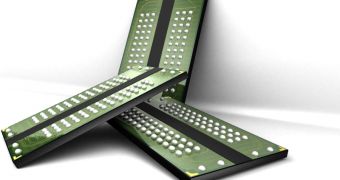Since tablets and ultrathin PCs are bound to end up as the main driving forces of the consumer PC and electronics market, those who manufacture their components need to step up their game.
On the random access memory (RAM) market, SK Hynix was particularly fast, having already launched DDR3L-RS DRAM.
Micron is doing the same, although its chips are a bit different. Where SK Hynix presented DDR3L-RS DRAM, Micron has brought forth DDR3L-RS SDRAM.
There is also the matter of different manufacturing processes: SK Hynix chose the 20nm node, while Micron is using 30nm technology.
"The feedback from our customers about this new category of DRAM has been extremely positive," said Robert Feurle, vice president for Micron's DRAM marketing.
"We are pleased to be the leading provider of DRAM solutions which are enabling the introduction of ultrathin notebooks and tablets that are thinner, faster and run longer on a single charge."
Micron is manufacturing 2 Gb (Gigabit) and 4 Gb chips, as well as 8 Gb x 32 DDR3L-RS and 8 Gb x 16 DDR3L-RS. The latter two are already sampling.
The main role of DDR3L-RS is to provide the same performance as normal memory (1.60GHz frequency), but at a fraction of the power consumption. The reduced physical size is a bonus advantage. Improvements in both areas are expected to be implemented in 2013, when DDR4-RS is scheduled to arrive.
"Micron has been one of the leaders in the development and commercialization of DDR3L-RS and the introduction of its 30 nm product is confirmation of this," said Mike Howard, senior principal analyst, DRAM and Memory at IHS iSuppli. "DDR3L-RS is an excellent option for customers who have tight power budgets and need high performance at a competitive price. We expect many of the next-generation ultrathin platforms to take advantage of DDR3L-RS."

 14 DAY TRIAL //
14 DAY TRIAL //